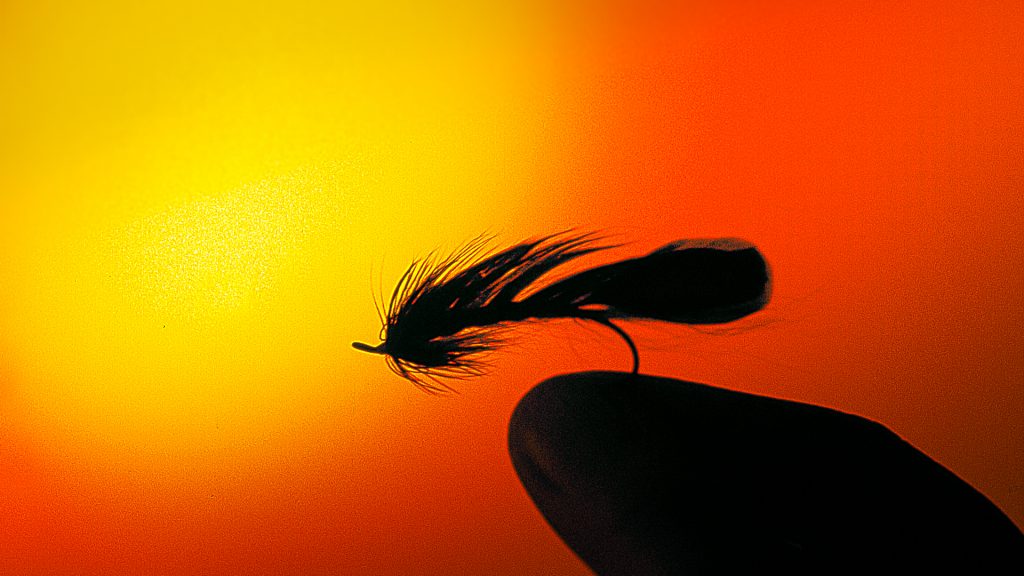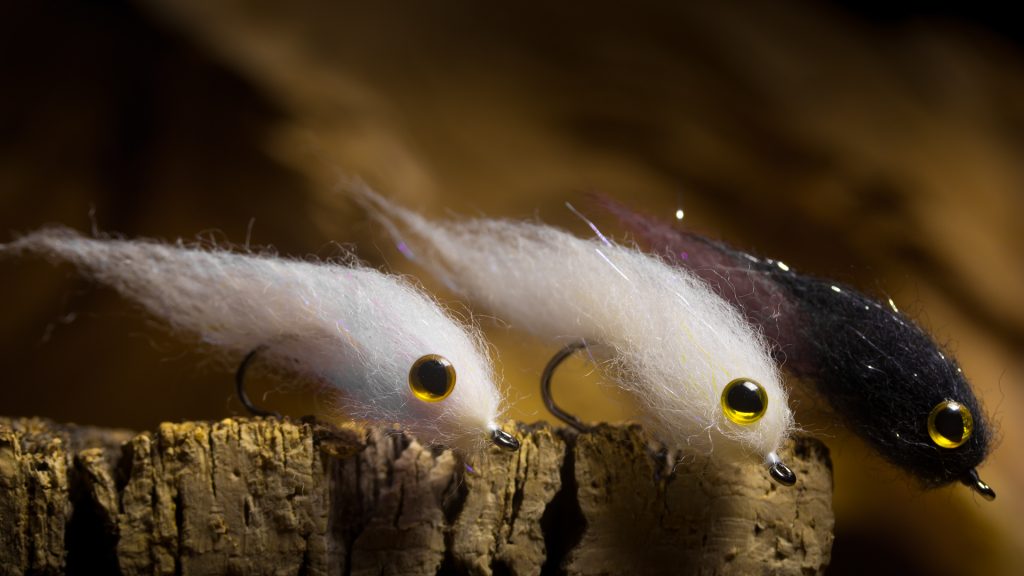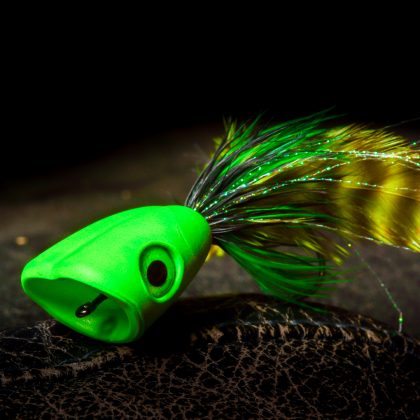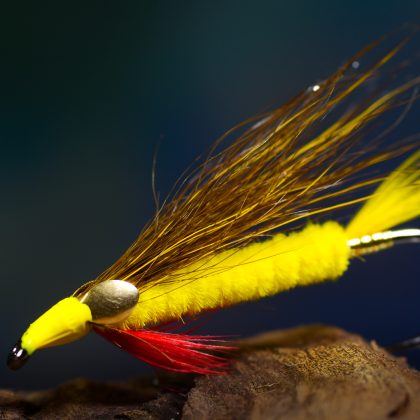
Today, let’s talk color.
Being anglers, most of us are interested in colors. Whether we swing flies, spoons, spinners, crankbait or jigs. Everybody is searching for that color combo that is just irresistible to anything with fins. We use as much time talking colors as we do talking weather – and bad excuses for not catching the big one today.
So let’s play a bit around with the topic. When you are trying to imitate a very specific baitfish, shrimp, crayfish or frog – well, the job at hand is kind of a no brainer. You just look at the critter you are trying to imitate and find a good match in your fly- or bait box.
But sometime the imitating game isn’t the most effective approach.
An example of this is when you fish your brown mottled sculpin imitation among thousands of the real deal. Why should a predator pick out one fly, that tries to camouflage itself in a crowd?
An all-black or an all-white sculpin might have a better chance of being chosen. The body profile is still right, but the color make it stand out.

But… let’s just for a second forget the imitation game….and the theoretical discussion about how fish see –and just focus on sheer visibility.
Let there be light
Fish rely to varying degree on sonar and hearing when looking for prey – but mostly they use sight. To be able to see anything daylight, or white light, is important. Daylight consists of a mix of colors – some of you might remember the prism and the rainbow experiment from your school days.
Seeing a lure with a mixture of colors over water – gives you all the details. Every color is vibrant and visible.
When your fly goes under water, it is a different story. Water absorbs daylight. Already when your fly is half an inch below the surface 25 % of the light is lost – partly due to reflection from the surface. 3 feet down 55 % of the light is gone. At 30 feet only 22 % is left.
Now this is all considering you fish in crystal clear oceanic water. If you fish in stained, dirty or algae affected water light can be totally gone a few feet down. But for now, let’s say we stay in clear water.
Most important though is: As the light diminishes – the colours get weaker as well.
Which colours are the first to disappear?
Since it’s hard to find a lure, that represent nearly all colors, in this film I’ve chosen a selection of lures, that does. Watch the video to see what happens, as we enter deeper water the colors disappear one by one.
- Red is the first casualty. In totally perfect conditions (flat surface, sun right over head, clear oceanic water) red color will appear grey from 17 feet and down. On dark days, at dusk or in murky, stained and dirty water red can be totally gone a few feet down.
- The next color that disappears is orange. Red and orange (and white, for that matter) is great for flies fishing near the surface on sunny days. The same can be said about black – since it makes a highly visible silhouette against the sky. Actually, anything goes as long as there’s enough light.
- When you go a bit deeper or turn down the light in other ways, yellow disappears
- Go deeper and green will be the next to give up.
- A bit darker and all you’ve got left is the blue, purple and black spectrum.
All good, but there are some exceptions from the rules
A lot of different environmental issues can complicate things. Nothing really turns down light more efficient than wind. At flat surface reflect less light than a choppy surface. That is one of the reasons why trout loves a good wave. In fact, they just like the light reduction.
In algae infested waters green light is the only color penetrating the water column. Chartreuse flies are very useful here.
In stained (read coffee or tea stained) water, the golden and red colors stand out. Red, yellow and orange works great, as long as there’s light.
When darkness falls it is back to the blue/black and purple combo.
Then there’s the UV colors and other complicated stuff I won’t go into – since I would be afraid to sound a bit like a 10-year-old kid sharing his wisdom on women ;0)
That’s all for today. Hope you guys found this useful.
Michael







Comments
Joseph Duca
Michael, just came from Big Hole Demon post , you gave me the link in your reply on my comment in the Grizzly ‘n’ Hulk Bugger. I did read that post a while ago, glad I reread it. Comments were closed on that post. My buddy Hank Vana commented on our BHD discussion in the G’n’H video. He’s an awesome guy and has many talents. His version of the BHD sounds like the squirrel hair one. That “power of three” stuck with me, I think Daniel from Nordic mentioned that in tying some 3 hackle flies. Thank you for the history lesson :o) Cheers my friend!
Michael Jensen
Hi Joe, Yep, I’ve seen Hank’s comment. Good info in that feedback. Ulla has to close comments of some of the post from time to time, because they get heavily spammed – mostly from links to film sessions with nearly naked women doing naughty stuff. As much as I find that interesting – this blog isn’t the right place for it.
Anyway… now it’s open again.
Cheers, Michael :0)
Comments are closed.